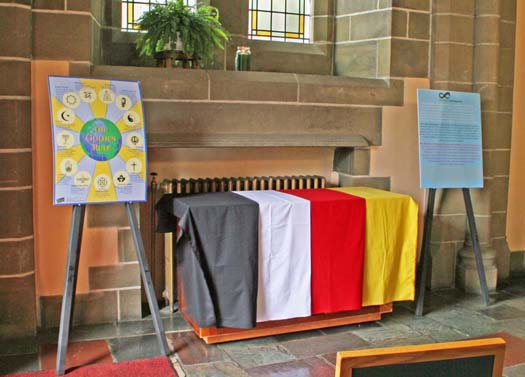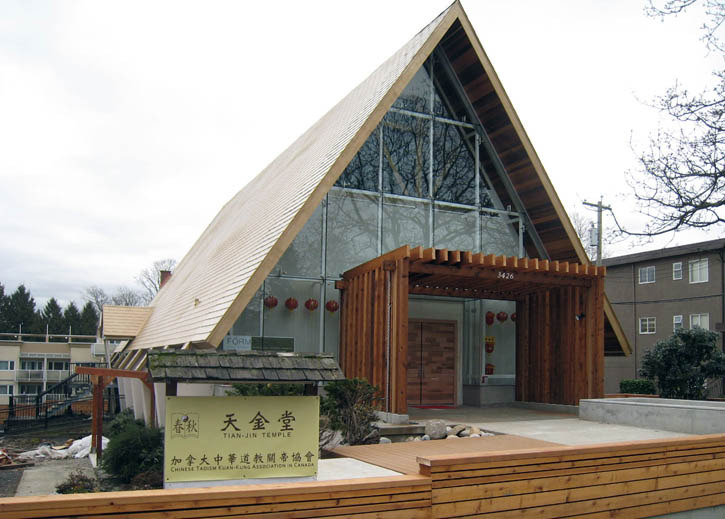The diocese of BC’s Diocesan Transformation Team (DTT) has been at work. This report is at pains to point out that the diocese is not “closing parishes in order to prop up a dying institution or to delay its inevitable collapse”. That is the last thing on Bishop Cowan’s mind: apparently, it’s all about mission, about being “a people on a journey” and, no, not people on a journey to oblivion.
What is this mission? It’s hard to say for sure, but In October last year Cowan, in a CBC interview, declared that he wants to “forge a deeper connection with the culture and engage in more “social justice” and ”spirituality”; in December last year he reversed a policy that prohibits clergy in same-gender relationships from serving in the diocese. It sounds as if the mission is more of the same pseudo-Christian clap-trap that has brought the diocese to where it is today.
On the other hand, Cowan in a recent edition of the diocesan paper said:
We can reduce, reduce, reduce. We can restructure, redefine and try to work smarter. These we must do. But unless we couple reduction and restructuring with spiritual renewal and the reclamation of those aspects of faith which are both central and essential to Christianity the downward trends of Anglican ‘religion’ on these islands will continue.
If, by “spiritual renewal and the reclamation of those aspects of faith which are both central and essential to Christianity” he means what J. I. Packer would mean if he said it, then perhaps there is some hope for the diocese; I suspect he doesn’t, though. If he did, a letter like this would never have been written:
I believe the Diocese of British Columbia has not dealt with the cause of division in this diocese. This avoidance has caused the Diocese to look like it cares more for buildings than it does for its people, who are so discontented with the situation in the ACoC that they are choosing to leave it. Rather than deal with the theological concerns of conservative Anglicans, the Diocese is more than willing to allow conservatives to “vote with their feet.” Of 395 people on the roll of St Matthias, only 24 (as recorded at the subsequent St Matthias Vestry) remained in the ACoC following the vote to join the Anglican Network in Canada. Of those who voted, 94.5% elected to rejoin the worldwide Anglican Communion, from whom we had been cut off by the actions of the ACoC, which led 22 Provinces to declare broken and impaired communion with the ACoC.
This would not have happened:
Parishioners of St Mary of the Incarnation (Metchosin) in Victoria were locked out of their church by Bishop James Cowan of the Diocese of British Columbia on April 4th. A court ordered the Diocese to return the church building to the parishioners the following day and ordered the parties to return to court before May 3 to consider a longer interim order.
And neither would this:
Today, Thursday February 26th, 2009, I accepted on behalf of the Bishop the following resignations:
♦ The Reverend Canon Ronald Corcoran, as Rector of St. Matthias, Victoria, and as a Diocesan Canon and priest of the Diocese of British Columbia.
♦ The Reverend Rodney May as Priest Associate of St. Matthias, Victoria and priest of the Diocese of British Columbia.
♦ The Reverend Glenn Sim as priest of the Diocese of British Columbia. As well, I have withdrawn the Permission to Officiate of the Reverend Michael Pountney, a retired priest of the Diocese of Toronto living in Victoria. All four have indicated that they could no longer give their obedience to the authority over them, namely, the Bishop of British Columbia. They have stated their intention to receive licenses from Donald Harvey and the Anglican Network in Canada. While they have said that their resignations became effective on March 8th, 2009, I have exercised the Bishop’s prerogatives as bishop and employer to withdraw Licences and Permissions to Officiate effective today, with payout of compensation due. The clergy have all been informed that they must depart from the premises of St. Matthias, and may only return with the permission of the Bishop or his designate
So what is so important that James Cowan is desperate enough to use the language of evangelicals? The DDT report has the answer: “The DTT concluded: If it is to survive, the Diocese is going to look different.”
The diocese isn’t restructuring to win souls for Christ, it is restructuring to survive.
Like this:
Like Loading...
 From here:
From here:



 creeds which represented a “doctrine controlled corporation with a top-down management style in which the expression of compassion was an uncommon experience” and replace them with what Jesus was really getting at. You must:
creeds which represented a “doctrine controlled corporation with a top-down management style in which the expression of compassion was an uncommon experience” and replace them with what Jesus was really getting at. You must: